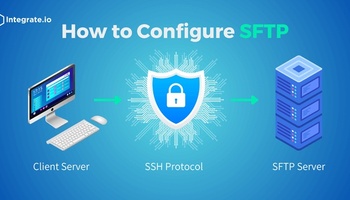A data governance framework is a series of organizational processes and protocols that govern, protect, and manage enterprise data. Many of the world's most successful organizations have created data governance frameworks that include data rules for all of its employees. These frameworks safeguard data and reduce the risk of data governance non-compliance.
Data Governance Framework Components
A data governance framework comprises various components for protecting and managing data in an enterprise:
Organizational structures
The people that ensure an organization adheres to data governance, such as data analysts, data strategists, and compliance specialists.
Processes
The processes that ensure an organization maintains data governance principles in an organization, such as access control mechanisms and decision rights.
Technologies
The technologies used to maintain data governance principles within an organization. This includes Extract, Transform, and Load (ETL), which connects to multiple data sources, transfers data through pipelines, and loads it to a centralized destination that makes data governance insights easier.
Methodologies
The methodologies used to maintain data governance principles, such as communicating data governance protocols to different departments.
Execution
Once an organization has created a framework, it executes data governance principles via a process called Master Data Management (MDM). This process defines how the organization will extract, transfer, load, store, access, and analyze data for data governance purposes.
A data governance framework outlines the who, what, where, and when of data governance in an organization. It outlines specific goals for organizations that need to govern data assets for accountability, compliance, and security purposes.
Building a Data Governance Framework
There is no universally accepted process for creating a data governance framework. Different organizations have different frameworks depending on how they manage data governance. However, most frameworks include:
- Roles and responsibilities for data governance. Who is to govern data? What about access controls? Who is accountable?
- The data architecture required to govern data.
- Identifying critical data elements.
- Creating standardized data definitions for governance.
- How a data governance framework supports MDM.
Data Governance Framework Benefits
Creating a data governance framework reduces the risks associated with data management, such as breaking service agreements and data protection legislation non-compliance.
With ever-stringent data protection legislation (GDPR, CCPA, etc.), organizations need to comply with regulatory requirements or face penalties. A data governance framework ensures all team members are aware of the importance of data governance and the people, processes, technologies, and methodologies required to execute it.








